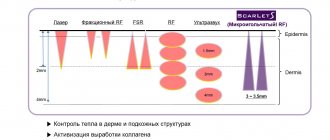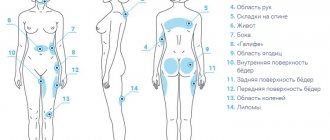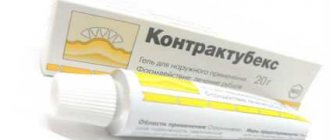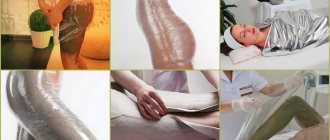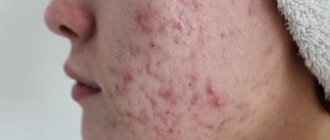Our face reflects all the negative impacts on the body from the outside and any internal health problems. Therefore, careful facial care is a necessary component of taking care of your health. How to determine the type and condition of a healthy person's skin? There is an excellent tool for this - computer diagnostics of facial skin! Visually, the skin should be smooth and elastic, without any allergies or diseases.
Devices for computer diagnostics of skin
Today, everyone can buy a new unique product from Amway - the Artistry portable skin diagnostic device to perform the most complete and accurate analysis. To preserve youth, there are a lot of means and cosmetic procedures, and recently also devices and programs for diagnostics.
But when selecting cosmetics and procedures, it is important to rely on the individual characteristics of the dermis. In addition to the anatomical structures common to all, there is an individual intensity of sebum secretion and a hereditary predisposition of the dermis to retain or lose moisture; age, climatic factors and many other influences are also important. But first of all, you need to know exactly the type of epidermis.
Diagnosis of the entire face
- pallor usually indicates low blood pressure, anemia, peripheral circulatory disorders, and renal failure.
- Extreme pallor of the face indicates not entirely healthy mild and severe digestive disorders.
- A yellowish tint to the skin indicates dysfunction of the liver or gall bladder, and a red color indicates high blood pressure, a predisposition to palpitations, and apoplexy. Periodic redness of the face can be caused by a rush of blood caused by menopause, as well as a malignant tumor in the small intestine or a tumor of the adrenal medulla.
- Excessively silky skin is a sign of predisposition to rheumatism, gout, kidney and bladder diseases.
- Dry, rough skin indicates a predisposition to fever and skin diseases.
- Cold and damp skin is a signal of a predisposition to liver diseases.
- Wrinkled facial skin in young and middle age indicates a disease of the pancreas.
- If the skin of the face has a bronze coloration, then this is a sign of damage to the adrenal glands.
- Sudden yellowing of the facial skin is a signal of dysfunction of the spleen.
- A greenish complexion may appear with cancer.
- If the cheeks have a blue-red color, then we can talk about heart failure.
- With excessive intake of protein into the body and consumption of fried foods, birthmarks, so-called liver spots, may appear. Long-term digestive disorders lead to the appearance of acne on the skin.
- A web of blood vessels on the skin, like brown spots at the roots of the hair, is a sign of increased stress on the liver. White spots on the skin indicate metabolic disorders.
- Dilation of blood vessels on the skin near the mouth indicates gastritis, gastrocolitis.
- Elastic facial skin is a sign of health. And sagging indicates premature aging of the skin. This happens in diseases of the metabolism and gastrointestinal tract.
- General puffiness of the face - a diseased heart.
- A sallow complexion, a “drooping” face is a sign of the development of a tumor disease.
- Capillary mesh on the cheeks is a signal of high blood pressure and a tendency to stroke - apoplexy type.
- Light spotty pigmentation on a woman’s face is a sign of pregnancy.
- The appearance of yellowish-brownish pigment spots on the face indicates renal pathology.
- Pink, red cheeks and at the same time bluish lips - mitral heart disease.
- Bluish pallor of the face is a symptom of anemia or pulmonary pathology.
- Waxy pallor is a sign of tuberculosis.
Skin types
There are 4 main types of facial dermis:
- Normal.
- Dry.
- Fatty.
- Combined.
Normal type
Owners of the normal type are very happy people, their face looks clean and fresh, it does not flake, and has a uniform pink color. A sufficient amount of sebum is produced inside the dermis for lubrication and moisture, and there are no blackheads or wrinkles on it. However, the normal type is very rare.
Dry type
The dry type is characterized by a dull shade, the face is practically free of irritation and peeling. The dry type is common. Although such skin looks attractive in youth, without care and intensive nutrition it ages quite quickly.
Fat type
Oily skin is excessively shiny due to increased sebum secretion, its pores are enlarged and acne often appears on it.
Combined type
Characterized by uneven distribution of sebaceous lubricant. For example, the skin on the nose and chin is oily, while the skin around the eyes is dry. The combined type is very common and can have features of all the main types.
Most popular: The benefits of organic silicon for beauty and health
Skin condition
To have a clear idea of the current skin condition, constant consultations with a cosmetologist are necessary, and even better, the use of special diagnostic equipment.
Today, many portable and stationary devices for computer diagnostics of the condition of the dermis have appeared on the market. Their principle is the same - various sensors take data from the human epidermis at certain points and enter it into a computer. Next, a special program compares the obtained data with normal values, taking into account the patient’s gender and age, and produces a result.
The diagnostic results obtained can be used to select the most suitable cosmetics or to select the best technique for correcting appearance. Increasingly, even in hairdressing salons, computer diagnostics of the scalp is being carried out to select the most effective hair care products. More and more entrepreneurs are purchasing portable equipment that measures the level of fat and moisture in the epidermis of the face in different places, right in the salons where they sell cosmetics or provide their cosmetology services.
What does your chin tell you?
The chin area belongs to the element of Water, which is associated with the functioning of the kidneys and genitourinary system, and is also responsible for the functioning of the hormonal system and glands.
- Redness, irritation, peeling, darkening or, conversely, lightening of the area around the mouth and chin may indicate problems with the kidneys or bladder.
- Periodic acne on the chin indicates a hormonal imbalance. The problem most often lies in the body's excess production of estrogen or testosterone, and can be accompanied by irregular menstruation in women and prostatitis in men.
- A slightly swollen chin means your kidneys are working hard.
- A transverse wrinkle on the chin may be a sign of congestion at the level of the liver or pelvis.
- If your chin often goes numb, you should visit a cardiologist and have an electrocardiogram done, as there may be heart problems.
Pay attention to the area located from the nose to the upper lip. This small area reflects the condition of the uterus and ovaries in women and the condition of the prostate gland and genitals in men. Horizontal folds, peeling or discoloration in this area can signal serious problems in the reproductive area, including endometriosis, uterine fibroids or infertility.
According to Chinese medicine, people with small chins are genetically predisposed to weak kidneys and problems in the genitourinary system. However, this does not mean that every person with a small chin will necessarily have diseased kidneys. This is only a warning about the current trend, so that a person tries to make appropriate changes in his lifestyle and prevent the occurrence of the disease.
Diagnostics can be carried out literally on the go
Facial diagnostics using such simple devices, even done on the go, gives stunning results. What can we say about the serious equipment installed in cosmetology clinics! Moreover, in the clinic, professional doctors and cosmetologists interpret the results.
Therefore, patients can be sure that, based on the results of computer diagnostics, they will receive comprehensive, truly personalized recommendations on proper care, suitable cosmetics and the need for procedures. So, what will you learn from the results of computer diagnostics:
- Your skin type. Fat content is checked mainly in the forehead area and 1 cm below the cheekbones.
- The degree of its moisture content on a scale from 0 to 99.
- Skin elasticity, i.e. its elasticity.
- The thickness of the stratum corneum.
- Number of enlarged pores.
- Depth of wrinkles.
Diagnosis of diseases in the face and neck
Share on Facebook VKontakte Twitter Odnoklassniki
1. Rectum.
On the face it is represented by a projection zone on the surface of the skin of the upper left forehead. Functional impairment can manifest itself as skin pigmentation, acne, redness, and the growth of moles.
2. Sigmoid colon.
Its representation is located on the surface of the skin of the left upper lateral area of the forehead. Functional impairment can manifest itself as skin pigmentation, pimples, redness, and moles.
3. Liver.
The representation is located between the eyebrows, in the space between the base of the bridge of the nose and the line connecting the brow ridges on the skin of the forehead. Liver pathology is accompanied by skin irritation, acne, pigmentation, and moles.
4. Small intestine.
Its projection is located in the middle part of the forehead, and with intestinal pathology it is manifested by skin disorders (pigments, pimples, redness).
5. Descending part of the colon.
Its representation is located on the left lateral surface of the skin of the forehead. Functional disorders manifest themselves on the skin (pigmentation, dryness of the area, increased porosity, acne).
6. Left adrenal gland.
The projection is located in the medial superciliary region of the left half of the face. With a functional disorder of the adrenal gland, pain in the periosteum of the superciliary region appears, and the skin reacts with irritation.
7. Area of the left kidney pelvis.
It is projected onto the skin of the inner surface of the corner of the left eye and the tear duct. The pathological process in the area of the renal pelvis is sometimes expressed by a skin reaction in this area (darkening, pigmentation, redness, enlarged pores, growth of papillomas, wen). Sometimes the problem contributes to the formation of a blockage of the tear duct, an inflammatory process in it, and excessive lacrimation.
8. Upper pole of the left kidney.
It is projected onto the brow ridge and the skin of the upper part of the eyelid. The disorder is manifested by a vascular pattern (swelling), pimples, redness, and porosity on the skin.
9. Left lobe of the liver.
Projected onto the white membrane of the eye. A disorder in the liver is manifested by a red vascular pattern on the white of the eye.
10. Body of the gallbladder, spleen.
The projection is located on the skin and on the periosteum of the temporal bone on the left side of the face. With bladder pathology, redness, pimples, pigment spots appear on the skin, its porosity and venous pattern increase. The periosteum of the temporal bone also reacts; it becomes painful on palpation.
11. Left side of the transverse colon.
The representation is located in the lower medial part of the corner of the left eye. Its dysfunction is manifested by bulging of the skin from the inner corner of the eye under the lower eyelid to the outside of the face, sometimes with redness or pigmentation.
12. Pancreas.
Its representation is located on the lower part of the bridge of the nose, at the border of the connection with the tip of the nose. The pathology is manifested by skin irritation, pigmentation, and sometimes a venous vascular pattern.
13. Bile ducts of the liver and gallbladder.
The projection is located in the lower part of the temporal bone of the left half of the face. With their pathology, redness, pigmentation, pimples and a vascular pattern are observed on the skin; with long-term pathology, porosity is observed. The periosteum of the temporal region becomes painful. Often the pathology is accompanied by headaches of temporal localization. Additionally, it can be noted that sometimes when the bile ducts are blocked, the skin of this area of the face turns yellow.
14. Left kidney.
The projection is represented by the left auricle (skin and cartilaginous base). The auditory canal is a projection of the ureter, the inner ear is a projection of the bladder. In pathological conditions of the kidney, hearing decreases, inflammation of the inner ear occurs, and vestibular disorders appear. In some cases, hardening of the cartilage base is observed. Sometimes it softens, and sulfur secretion from the ear canal increases.
15. Cardiac pathologies.
The projection is presented in the upper left part of the left cheek at the junction with the orbit. Pathologies are expressed by swelling of the skin, redness, pigmentation, and a vascular pattern in the infraorbital region.
16. Ureter of the left kidney.
It is projected onto the skin of the face by a line running from the corner of the eye along the cheek to the bottom of the chin. When it is irritated by sand, small stones or when there is inflammation in it, a pattern of a line or part of a line of white or red color appears on the skin (depending on which part of the autonomic nervous system predominates - sympathetic or parasympathetic).
17. Left lobe of the liver.
Its representation is located on the left side of the face, in the area of the muscles of the jaw joint. It manifests itself as an involuntary increased tone of the muscle group and the development of arthrosis of the joint. Occasionally, the disorder is projected onto the skin in the form of pigment or irritation.
18. Left mammary gland.
The projection is located on the skin of the left cheek at the intersection of a vertical line coming from the outer part of the corner of the eye and a horizontal line passing through the upper pole of the wings of the nose. The diameter of the projection of the mammary gland on the cheek will be approximately equal to the distance from the corner of the eye to its iris. The pathology is manifested by pigmentation, redness, increased porosity, and swelling of the skin.
19. Left lung.
It is projected onto the skin of the left cheek, covering the cheekbone. The pathology may manifest itself as redness, an angiopathic pattern, porosity, pigmentation, pimples, dryness, unevenness or roughness of the skin surface.
20. Cardiac disorders (more often rhythm disturbances).
They are projected on the skin of the tip of the nose in the form of redness, angiopathy, and pimples.
21. Bronchus of the left lung.
Projected on the skin of the wing of the left half of the nose. Violations are expressed by a vascular pattern, redness, pimples, and pigmentation.
22. Diaphragm, costal arch.
They are projected on the skin along the nasolabial fold. Violations are manifested by redness of the fold, dry skin in it.
23. Lesser curvature of the stomach.
Projected onto the skin and mucous membrane of the upper lip. The pathology is manifested by transverse cracks on the lip, herpetic eruptions, peeling of the skin, loss of lip color, and the appearance of lip wrinkling.
24. Duodenal bulb, pyloric section of the stomach.
The projection zone is located on the skin outside the corner of the mouth. Disturbances are manifested by pigmentation, redness of the skin, jams and cracks in the corners of the mouth, and in degenerative processes - the growth of moles.
25. Adrenal gland of the left kidney.
It is projected onto the skin and muscles of the upper neck on the left lateral axillary line, as well as to the left and right of it along the muscular lateral surface. The pathology is manifested by muscle pain upon palpation; on the skin it sometimes manifests itself as irritation, pigmentation, and papillomomatosis.
26. Left inguinal fold and area of the pupart ligament.
The projection is located on the left outer surface of the skin of the chin. Violations are manifested by redness of the skin, acne, age spots.
27. Left ovary in women, left testicle in men.
The representation is located on the skin of the chin on the left side, near the left mental fold. The pathology is manifested by redness of the skin, pimples, dryness and flaking of the skin, and the growth of moles during degenerative processes.
What does computer skin diagnostics provide?
By accurately determining your skin type, you can accurately choose the appropriate cosmetics that will be truly effective. In modern conditions, the cosmetics market is crowded, and making a choice is becoming increasingly difficult. And the wrong cosmetics can not only be ineffective, but also seriously harm, after computer diagnostics of the skin this will no longer threaten you.
Most Popular: Selecting the Best Drugstore Creams for Dry Skin
By knowing the level of hydration, you will know exactly whether your skin needs additional hyaluronic acid and what is the best way to administer it. By accurately determining the degree of skin elasticity, you will know whether it needs additional collagen. And an experienced specialist, based on the analysis results, will be able to accurately determine which way is best to administer it or stimulate its natural production.
Having found out the thickness of the stratum corneum, the cosmetologist will be able to reasonably recommend one or another cleaning method, the need and degree of peeling, as well as the best way to carry it out. Computer analysis of skin pores, scars and wrinkles will allow you to choose the optimal way to get rid of them.


